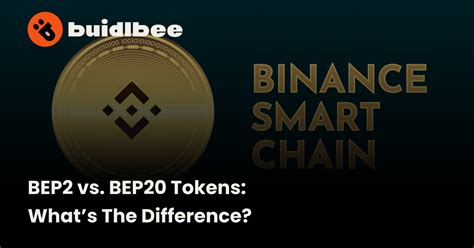Understand the cryptocurrency scenario: a deep immersion in Bep2 and Bep20
In the world’s constant evolution of cryptocurrencies, two popular patterns emerged as crucial ecosystem components: Chain Smart Smart (BSC) and their variants. The main difference between native BSC, BeP20 and BeP2 tokens is in their cases of tokenomics, utility and use. In this article, we will deepen the main characteristics of each standard, exploring its differences and similarities.
What is Binance Smart Chain (BSC)?
Binance Smart Chain is a layer of layer 1 built in the Ethereum Virtual Machine (EVM) architecture. It is designed to provide rapid transaction processing speeds, which makes it appropriate for decentralized finances (defi), games and other high performance applications. The native BSC, BNB token is used for various purposes, including government, inventory and trade.
BEP20: Decentralized cover standard tokens (DEX)

The Bep20, abbreviated for the base-20 toke, is a utility token specifically designed for decentralized changes in the Binance smart chain. It is based on the ERC-20 standard, which allows perfect interoperability in different blockchain networks.
Main features of BEP20:
* Decentralized exchange support (DEX) : Bep20 is designed to facilitate negotiation in decentralized exchanges, providing a safe and transparent way to buy, sell and exchange tokens.
* ERC-20 Compatibility: Bep20 can be used together with any Token ERC-20, allowing the perfect interaction between different chains and ecosystems.
* Low rates : Bep20 transactions are usually cheaper than other blockchain networks, which makes it an attractive option for DEX users.
BEP2: The standard for intelligent intelligent contracts of low interior cost
**
BEP2 is a set of public service tokens developed by Binance Labs, designed to allow low -cost intelligent intelligent contracts and interpreter in the Binance smart chain. It is built using the Webassembly standard and uses the native token of the Binance Smart chain, BNB.
Main features of BEP2:
* Interoperability : Bep2 provides continuous interaction between different blockchain networks, which allows the creation of decentralized applications (DAPP) that can be executed in several chains.
* Low transaction rates : Bep2 transactions are usually cheaper than other blockchain networks, which makes it an attractive option for developers and users.
* SECURITY : BEP2 has been designed taking into account safety, with advanced cryptographic techniques to avoid intelligent contractual vulnerabilities.
** Main differences of
Although both standards offer benefits, there are significant differences between them:
* Use cases : BEP20 is mainly designed for decentralized exchanges (DEX), while Bep2 focuses on creating inventible and low -cost intelligent contracts.
* TOKENOMICS : BEP20 has a greater market capitalization than BEP2, with more developers and users in the project. Bep2 Tokenomics focuses more on scalability and usability.
* Scalability : BEP2 is designed to be more scalable than the BEP20, allowing greater transaction volumes and a greater adoption of low -cost interpretable intelligent contracts.
Conclusion
In conclusion, understanding the differences between the native tokens of the Binance, Bep20 and Bep2 smart chain is crucial for developers, users and investors. Although both standards offer benefits, they meet different use cases and have different characteristics that differentiate them.
As the cryptocurrency scenario continues to evolve, it is essential to stay informed about the latest BSC tokens developments, intelligent contract platforms and decentralized applications. In doing so, it will be better equipped to navigate this complex ecosystem and make informed decisions as a participant or investor.
